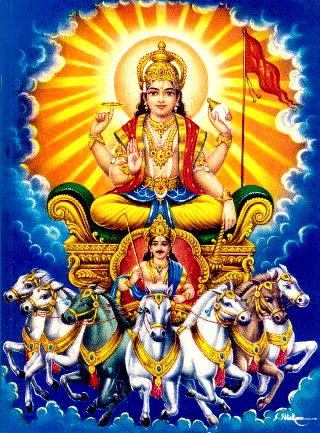
Aum Mitraya namah ||Aum Ravayé namah||Aum Suryaya namah||Aum Bhanavé namah||Aum Khagaya namah||Aum Pushné namah||Aum Hiranyagarbhaya namah||Aum Marichayé namah||Aum Adityaya namah||Aum Savitré namah||Aum Arkaya namah||Aum Bhaskaraya namah||
Makar Sankranti is of great significance to a devote Hindu and is one of the most important dates in the Hindu Calendar. Lord Surya (Sun God) is worshiped on this day. Every living and non-living being merges with the Brahman and Sun is the Pratyaksha-Brahman or the Brahman that can be seen.
The importance of Sun to earth and to the living beings was understood by Hindus from the very beginning. And the importance of it can be found in the Gayatri Mantra chanted to Sun (Surya) daily.
There is also a symbolic meaning to Makara Sankranti. ‘Makar’ means crocodile. Sankranti means ‘to cross into or change.’ The ‘Makara’ or crocodile represents the materialistic world and ‘Sankranti’ gives an opportunity to get away from the clutches of the crocodile or the materialistic world.
The six month long Uttarayana begins on the Makar Sankrant day. From this day, the harshness of winter subsidizes and the days get longer. Symbolically, the Sun slowly removes darkness and ushers in the light of knowledge. Uttarayana is also the daytime of the Devas and therefore auspicious activities takes place during this period.
There are also numerous legends and myths which add to the importance of Makara Sankranti. One of the most important myths is the death of Bhishma Pitamaha in the Mahabharata. Bhishma chose Makar Sankranti day to die. (Bhisma had got a boon from his father that he will only die when he wishes.) It is believed that people who die during Uttarayana merges with the Brahman, thus ending the cycle of rebirth.


No comments:
Post a Comment